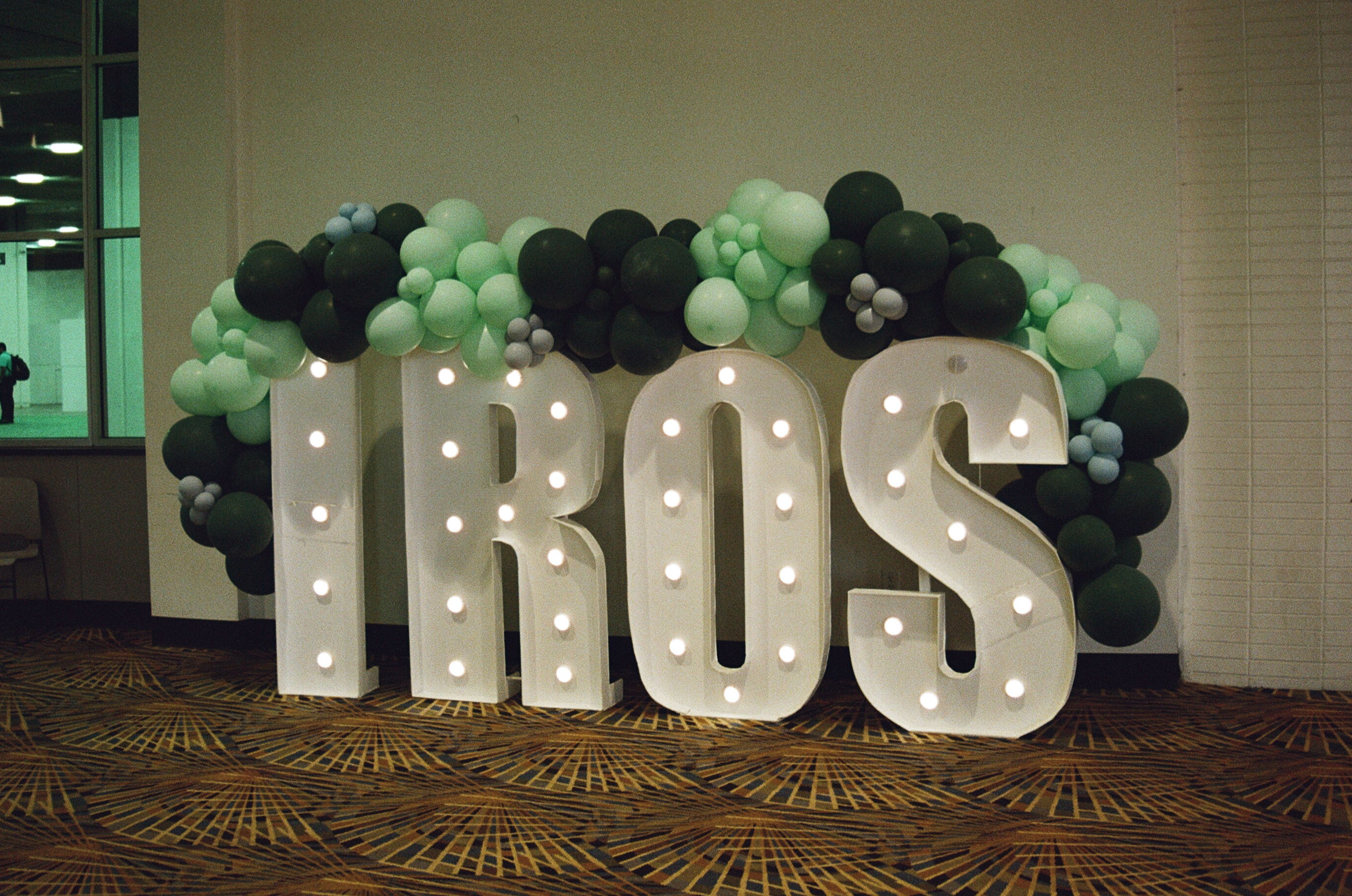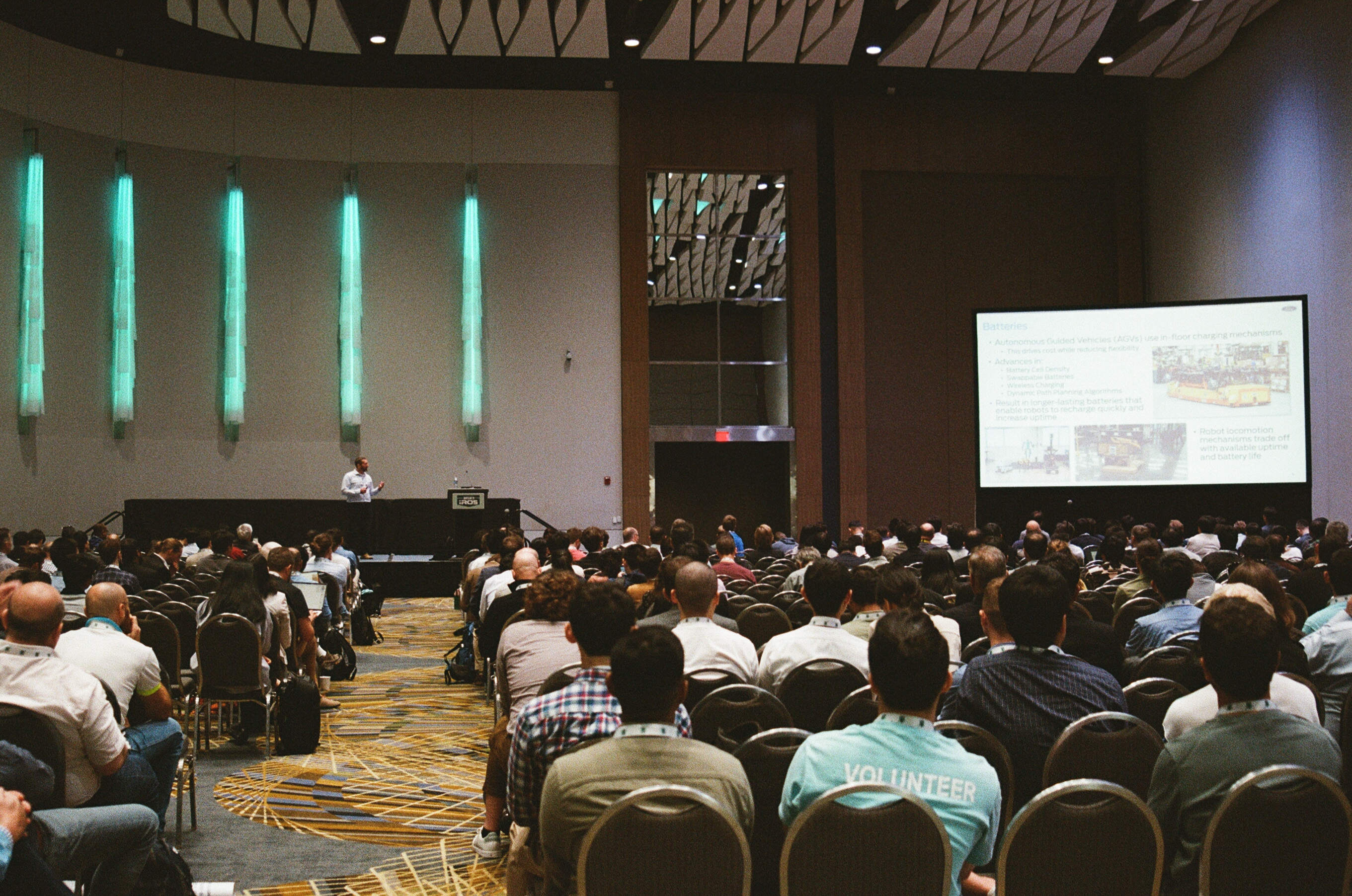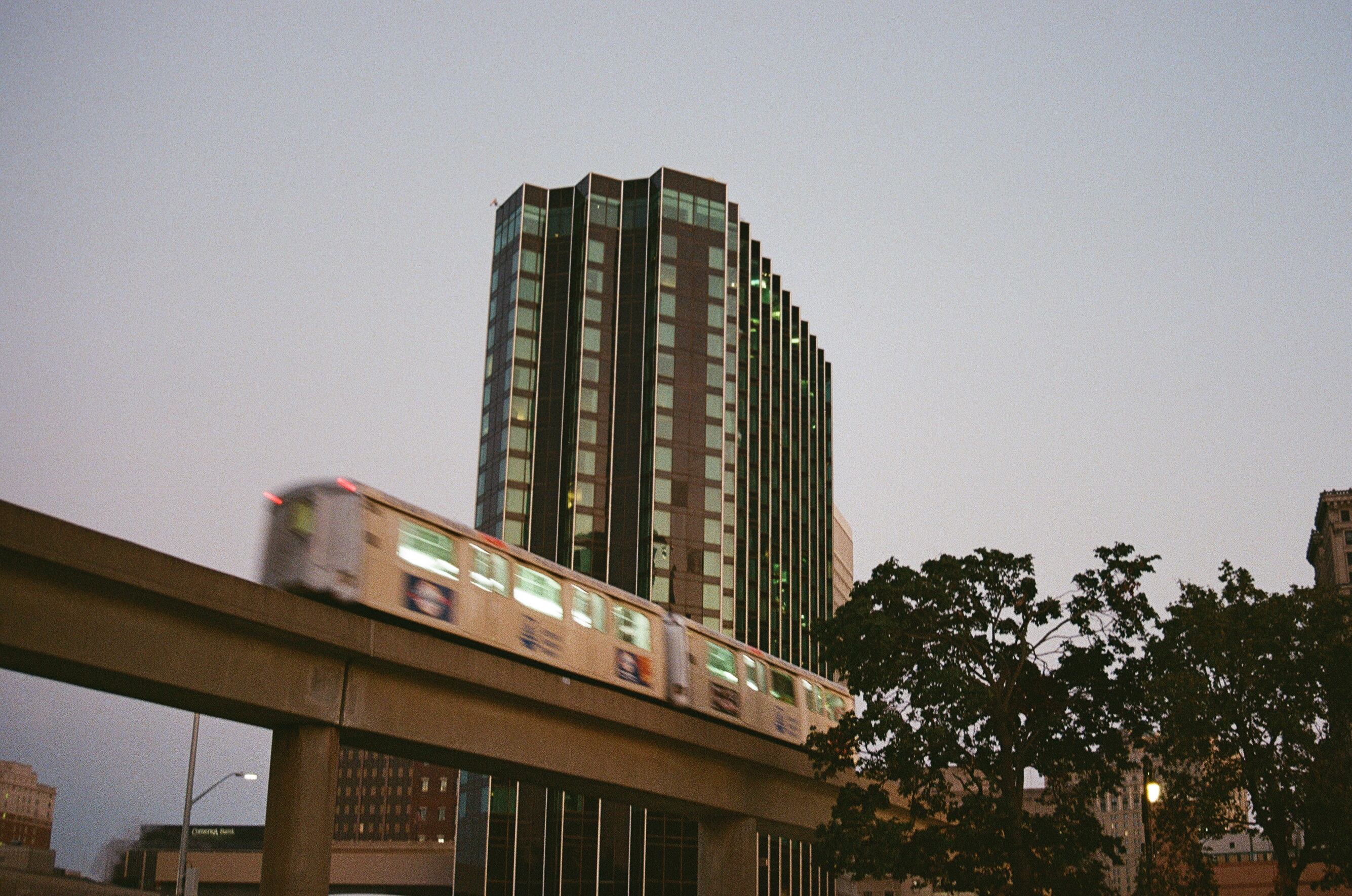
Canon Rebel G, EF 38-76 1:4-5.6, Fuji 400
It’s not every day that you can take a bus to an international robotics conference, spend a few hours there, and be back home on the same day. That’s why I jumped at the opportunity to attend IROS this year, which was held a mere 40 miles away in Detroit. I wouldn’t even need to drive myself or worry about parking, thanks to the cheap bus service that runs fairly often between Ann Arbor and Detroit. As much as it would’ve been awesome to stay at the conference that week, classes and other commitments didn’t stop for IROS. Nevertheless, I had the chance to volunteer quite a bit and attend some sessions I was interested in.

Overlooking the atrium from one of the bridges. Canon Rebel G, EF 38-76 1:4-5.6, Kodak 200
My first visit to IROS was the Sunday before the main conference kicked off. I was mostly there to work an afternoon volunteer shift at the registration tables. Naturally, a good portion of volunteers were UM students, though it was nice to see many others who had traveled from much farther away. This was also a good opportunity to find my way around the venue so I wouldn’t get lost later in the week. The conference was held at the Huntington Place, an enormous convention center on the shores of the Detroit River. IROS was a huge conference and still only managed to take up roughly half of the venue. Although the main conference was still a day away, there was already a sizable turnout, especially at the evening’s welcome reception.

Afternoon keynote talk on Tuesday. Canon Rebel G, EF 38-76 1:4-5.6, Fuji 400
I volunteered a couple more shifts on Tuesday, which included assisting with a session on deep learning for perception. Although quite far from my usual work, I was nevertheless interested in seeing the abundance of experiments conducted on aerial platforms. Some presentations that stood out in particular for me included a vision-based positioning system that works on visible light, thermal, and event cameras, a sensor fusion method for locating people with limited computational hardware, a neural network trained to detect bodies of water in aerial imagery accurately enough to use for navigation, and adding control barrier function-like layers to a neural network to improve its reliability. Besides these, the session was overall very engaging and I found the presentations easy enough for even a formal methods guy like myself to follow.
IROS exhibition hall. Canon Rebel G, EF 38-76 1:4-5.6, Fuji 400. Color and exposure correction done in post-processing.

Sunrise over Windsor. Canon Rebel G, EF 38-76 1:4-5.6, Fuji 400
It’s interesting to note how many of the formal methods presentations involved temporal logic. It makes sense for a robotics conference given the near-universal need to specify properties on a constantly-evolving system. Nevertheless, it was funny to see presenters skipping over their temporal logic intro slides after they realized they all prepared nearly the same slide. I liked the talk on Surprisingly Tricky Logic (a play on the initials of Signal Temporal Logic), as it very directly challenges the often-held assumption that formal specifications are unambiguous (at least for humans). The paper reveals the surprisingly low accuracy with which human subjects (even experts) could interpret temporal specifications. I think it nicely highlights one of the core challenges with formal methods: ensuring the specification you’re verifying is indeed the one you wanted. I was also interested in the talk on robotics-specific languages for specifying robot tasks, and it was encouraging to see the adoption of programming languages research in robotics.
Other cool (to me) talks included a privacy-conscious sensor selection method for IoT applications, a game-theoretic approach to efficiently collaborating with humans, and a safe, efficient exploration method combining a unique deep-learning reward gradient bounded by LTL-based specifications. The overall theme of the session tended towards combining formal specifications with machine learning of some sort to help safeguard it from errors, though it’s worth mentioning that the talks all covered a wide range of topics.

The hallway leading to one of the presentation rooms. Canon Rebel G, EF 38-76 1:4-5.6, Fuji 400
I had class later in the afternoon so I couldn’t stay very long after the session. I did however get the chance to take the Detroit People Mover, which is an incredibly cool mode of transit that goes right through the conference center and weaves between various downtown buildings. Coolness aside, it ended up taking slightly less time than walking to the bus stop, and it only cost 75 cents per ride. IROS 2023 was a unique opportunity to attend a robotics conference so close to home, and as always, it is great to see roboticists becoming increasingly interested in adopting formal methods. Hope to see you all again at the next one!

A building across the street from the conference center, with the people mover whizzing by. Canon Rebel G, EF 38-76 1:4-5.6, Fuji 400